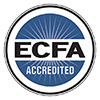Since the time of Jesus, the region around the Sea of Galilee was only second to Jerusalem for interest to Christian pilgrims in the Holy Land. Locations north and west of the lake such as Capernaum, Magdala, Bethsaida, and Tiberius have nearly monopolized tourism.
Until recently, the absence of any significant archaeological discoveries on the eastern shore seemed to confirm this selective interest. As a result of recent excavations by the Israel Department of Antiquities and Museums, however, it is becoming quite clear that the eastern shore of the Sea of Galilee also played an important role in Jesus’ ministry.
One significant site on the eastern side of the Sea is the place where Jesus’ miracle of casting out several demons from possessed men—and into a herd of pigs—is thought to have occurred. All three Synoptic Gospels mention this event (Matthew 8:28–34; Mark 5:1–20; Luke 8:26–39) with some variation. As early as the third century the site of the miracle was fixed at the mouth of Wadi Samak near a Roman urban settlement known as Tell el-Kursi. The reasons were threefold: 1) its location on the eastern shore of the lake; 2) its proximity to an urban center; and 3) its topographical setting with a steep hill leading down to the lake.
The problem is that Tell el-Kursi has never been excavated and there is no archaeological evidence linking the site to Jesus’ miracle. Furthermore, the names in the Gospels associated with the site of the miracle (Gergessa, Gadara, and Gerasa) are unknown.
It was not until the late twentieth century (1970) that archaeologists made an important discovery. The discovery was made serendipitously through the use of an archaeological tool of great import: a bulldozer. A new road to the Golan Heights was being cleared. A bulldozer exposed large quantities of Byzantine pottery and the ruins of several ancient structures. Where? At the very site that early pilgrims identified with Jesus’ miracle. Of course, the bulldozer was stopped, and five seasons of scientific study ensued through 1980.
They found a large, walled settlement of a religious character (covering four acres) including a monastery, basilica, large church, and a tower-like structure with a chapel. The latter structure marked the very site of the miracle as determined by Christians in the mid-third century. A large tell (separate from Tell el-Kursi) within 300 yards of this religious complex was likely the urban center of the area but has not been excavated. The remains of a harbor can still be seen in the small bay nearby.
The monastery compound was built in the late fifth century but was severely damaged by the Persian invasion of A.D. 614. Pilgrimage was cut off and further damage occurred with the Moslem conquest in the seventh century. A disastrous earthquake in about A.D. 746 closed the site entirely and by the end of the eighth century it was abandoned. Alluvial soil from the area subsequently covered this important site from view. Critics wondered if the miracle was merely legend. But more than 1,200 years later a bulldozer uncovered this biblical site. The historical nature of the Gospels and the life of Jesus were once again confirmed!


